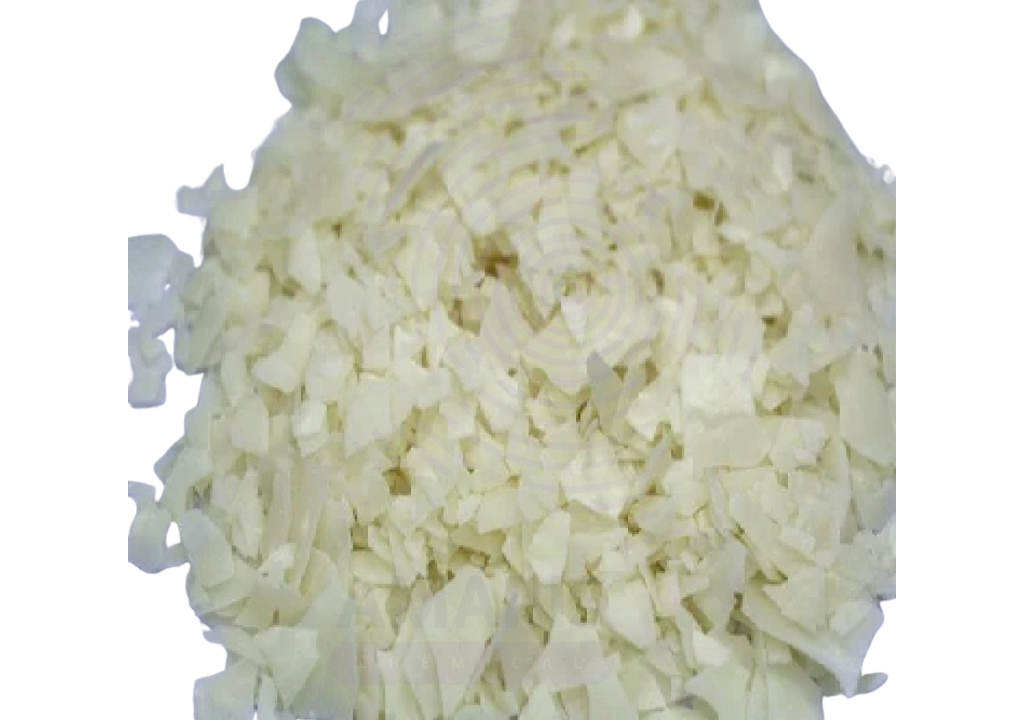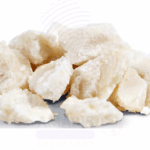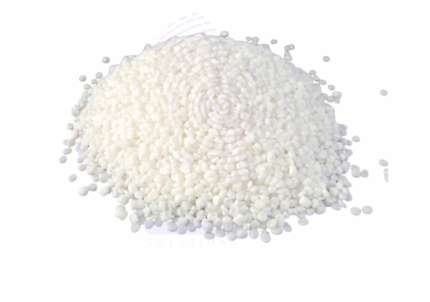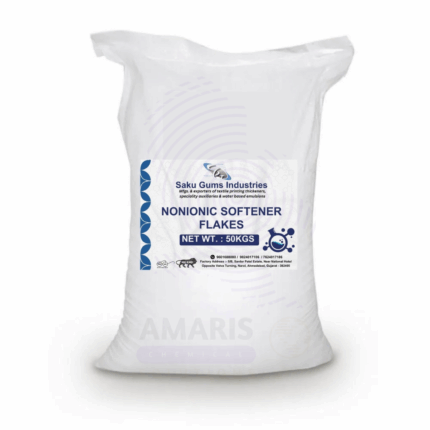Inosoft( Softener Flakes)
Whatsapp Order
Inosoft Softener Flakes is a solid, flaked fabric softener designed for use in textile finishing processes. These flakes are typically composed of cationic softening agents derived from quaternary ammonium compounds or fatty amine derivatives, formulated to impart softness, smoothness, and antistatic properties to fabrics. The flaked form allows for easy storage, handling, and controlled dosing in industrial textile softening applications. Inosoft flakes dissolve readily in water during processing to provide uniform softening and enhanced fabric feel.
Description
Table of Contents
Toggle
Inosoft (Softener Flakes)
Primary Uses
- Textile Finishing
- Fabric Softening: Used in the final rinse or finishing bath to reduce fabric stiffness and improve hand feel across cotton, polyester, blends, and synthetic textiles.
- Antistatic Treatment: Provides durable antistatic properties by neutralizing static charge buildup in synthetic fibers and blends, enhancing wearer comfort and reducing static cling.
- Surface Lubrication: Enhances fiber flexibility and reduces friction during fabric handling and garment manufacturing, helping prevent fabric damage or pilling.
- Softening in Industrial Laundries: Employed in bulk textile processing to maintain softness and improve drape of sheets, uniforms, and apparel.
- Dyeing Process Aid: Helps maintain softness and color brightness when applied post-dyeing as part of the finishing regime.
- Home Laundry Products
- Used as a raw material in manufacturing concentrated fabric softeners and dryer sheets in flake or pellet form for consumer laundry applications.
Secondary Uses
- Carpet & Upholstery Treatment
- Applied during cleaning or finishing of carpets and upholstery to impart softness and reduce fiber stiffness, enhancing tactile comfort.
- Leather & Nonwoven Textile Finishing
- Occasionally used in finishing formulations for leather or nonwoven textiles to provide softness and improve tactile characteristics without compromising strength.
- Personal Care and Industrial Applications
- Incorporated in certain cosmetic emulsions or industrial formulations as a conditioning agent, although less common.
KEY PRODUCT FEATURES
1. Basic Identification Attributes
- Chemical Name (IUPAC): Mixture of cationic surfactants and fatty amine derivatives (proprietary blend)
- Common/Trade Name: Inosoft (Softener Flakes)
- CAS Number: Not applicable (mixture)
- HS Code: 3402.12.00 (Cationic surface-active agents)
- Synonyms: Fabric softener flakes; textile softener flakes; cationic softener flakes
2. Physical & Chemical Properties
- Physical State: Solid flakes
- Color & Odor: Off-white to pale yellow; mild fatty odor
- Melting Point: Typically 50–70 °C (depending on formulation)
- Solubility: Soluble in warm water; dispersible in cold water with agitation
- pH: Slightly acidic to neutral in solution (approx. 4–6)
- Ionic Nature: Cationic
- Density: Approx. 0.8–0.95 g/cm³
- Compatibility: Compatible with most detergents and finishing agents; incompatible with anionic surfactants
3. Safety & Hazard Attributes
GHS Classification
- Not classified as hazardous under normal conditions
- May cause mild skin or eye irritation in concentrated form
Toxicity
- Low toxicity; non-toxic at typical use concentrations
- May be harmful if ingested in large quantities
Exposure Limits
- No established occupational exposure limits; use standard hygiene practices
4. Storage & Handling Attributes
Storage Conditions
- Store in a cool, dry, well-ventilated area away from moisture and heat
- Keep flakes sealed in airtight containers or bags to avoid clumping or degradation
Container Type
- Typically supplied in moisture-proof plastic bags, drums, or boxes
Shelf Life
- 12 to 24 months when stored properly in sealed packaging
Handling Precautions
- Avoid inhalation of dust during handling
- Use gloves to prevent skin contact in sensitive individuals
- Avoid mixing with strong oxidizers or anionic compounds
5. Regulatory & Compliance Attributes
- Complies with textile chemical safety standards globally
- Free from heavy metals, formaldehyde, and hazardous substances
- Meets biodegradability standards for cationic softeners
- Registered and approved for industrial textile applications in compliance with regional chemical regulations
6. Environmental & Health Impact
- Biodegradability: Readily biodegradable under aerobic conditions
- Ecotoxicity: Low to moderate aquatic toxicity; avoid discharge to water bodies without treatment
- Bioaccumulation: Not significant
- Waste Disposal: Dispose of according to local environmental regulations; avoid large-scale release into waterways
SAFETY HANDLING PRECAUTIONS
Safety Handling Precautions
PPE Required
- Gloves recommended to prevent skin irritation
- Dust mask if handling large quantities or dusty environments
- Safety goggles if risk of dust contact to eyes exists
Handling Guidelines
- Minimize dust generation and exposure
- Use in well-ventilated areas
- Avoid contact with incompatible chemicals, especially anionic surfactants
Storage Measures
- Store in sealed, moisture-resistant containers
- Avoid exposure to humidity to prevent caking or degradation
First Aid Measures
- Inhalation: Move to fresh air if dust inhaled; seek medical attention if irritation persists
- Skin Contact: Wash affected area with soap and water; discontinue use if rash develops
- Eye Contact: Rinse thoroughly with water for 15 minutes; seek medical attention if irritation continues
- Ingestion: Rinse mouth; seek medical advice if large quantities ingested
Firefighting Measures
- Fire Hazards: Combustible solid; may burn with smoke
- Extinguishing Media: Use water spray, foam, or dry chemical extinguisher
- Special Precautions: Use self-contained breathing apparatus in enclosed spaces with smoke
- Hazardous Combustion Products: May produce carbon monoxide and other toxic fumes when burned
Related products
Baso Soft
Baso Soft is a specialized fabric softener designed to impart softness, freshness, and ease of ironing to laundered textiles. It is formulated with cationic surfactants and conditioning agents that reduce static cling, enhance fabric texture, and leave a pleasant fragrance on clothes. Baso Soft is suitable for use in both household and commercial laundry processes, improving the feel and longevity of various fabric types such as cotton, synthetics, and blends. Its formulation also helps reduce wrinkles and improve fabric manageability after washing.
Non Ionic Softener
Non Ionic Softener is a type of textile softening agent formulated without ionic charges, making it compatible with a wide range of fabrics and detergents. It imparts a smooth, soft hand feel to textiles by reducing fiber stiffness and improving drape without causing fabric damage or yellowing. Due to its mild nature, Non-Ionic Softener is widely used in laundry, textile processing, and fabric finishing to enhance softness and reduce static cling.
Silicon Emulsion
Silicon Emulsion is a stable, water-based emulsion of polydimethylsiloxane (PDMS) or other silicone fluids, commonly used for lubrication, gloss enhancement, release, water repellency, and surface conditioning. It appears as a milky-white, viscous liquid and is non-toxic, non-flammable, and easy to handle. Due to its excellent spreadability and low surface tension, it is widely used in industries ranging from automotive and textiles to agriculture, construction, and cosmetics.


 Preservatives(food)
Preservatives(food) Flavor Enhancers
Flavor Enhancers Acidulants
Acidulants Sweeteners
Sweeteners Antioxidants
Antioxidants Colorants(food)
Colorants(food) Nutraceutical Ingredients (food)
Nutraceutical Ingredients (food) Nutrient Supplements
Nutrient Supplements Emulsifiers
Emulsifiers
 Collectors
Collectors Dust Suppressants
Dust Suppressants Explosives and Blasting Agents
Explosives and Blasting Agents Flocculants and Coagulants
Flocculants and Coagulants Frothers
Frothers Leaching Agents
Leaching Agents pH Modifiers
pH Modifiers Precious Metal Extraction Agents
Precious Metal Extraction Agents
 Antioxidants(plastic)
Antioxidants(plastic) Colorants (Pigments, Dyes)
Colorants (Pigments, Dyes) Fillers and Reinforcements
Fillers and Reinforcements Flame Retardants
Flame Retardants Monomers
Monomers Plasticizers
Plasticizers Polymerization Initiators
Polymerization Initiators Stabilizers (UV, Heat)
Stabilizers (UV, Heat)
 Antifoaming Agents
Antifoaming Agents Chelating Agents
Chelating Agents Coagulants and Flocculants
Coagulants and Flocculants Corrosion Inhibitors
Corrosion Inhibitors Disinfectants and Biocides
Disinfectants and Biocides Oxidizing Agents
Oxidizing Agents pH Adjusters
pH Adjusters Scale Inhibitors( water)
Scale Inhibitors( water)
 Antioxidants(cosmetic)
Antioxidants(cosmetic) Emollients
Emollients Fragrances and Essential Oils
Fragrances and Essential Oils Humectants
Humectants Preservatives
Preservatives Surfactants(cosmetic)
Surfactants(cosmetic) Thickeners
Thickeners UV Filters
UV Filters
 Fertilizers
Fertilizers Soil Conditioners
Soil Conditioners Plant Growth Regulators
Plant Growth Regulators Animal Feed Additives
Animal Feed Additives Biostimulants
Biostimulants Pesticides (Herbicides, Insecticides, Fungicides)
Pesticides (Herbicides, Insecticides, Fungicides)
 Active Pharmaceutical Ingredients (APIs)
Active Pharmaceutical Ingredients (APIs) Excipients
Excipients Solvents(pharmaceutical)
Solvents(pharmaceutical) Antibiotics
Antibiotics Antiseptics and Disinfectants
Antiseptics and Disinfectants Vaccine Adjuvants
Vaccine Adjuvants Nutraceutical Ingredients (pharmaceutical)
Nutraceutical Ingredients (pharmaceutical) Analgesics & Antipyretics
Analgesics & Antipyretics
 Analytical Reagents
Analytical Reagents Solvents(lab)
Solvents(lab) Chromatography Chemicals
Chromatography Chemicals Spectroscopy Reagents
Spectroscopy Reagents microbiology-and-cell-culture-reagents
microbiology-and-cell-culture-reagents Molecular Biology Reagents
Molecular Biology Reagents Biochemical Reagents
Biochemical Reagents Inorganic and Organic Standards
Inorganic and Organic Standards Laboratory Safety Chemicals
Laboratory Safety Chemicals Specialty Laboratory Chemicals(Special Laboratory Equipment)
Specialty Laboratory Chemicals(Special Laboratory Equipment)
 Demulsifiers
Demulsifiers Hydraulic Fracturing Fluids
Hydraulic Fracturing Fluids Scale Inhibitors(oil)
Scale Inhibitors(oil) Surfactants(oil)
Surfactants(oil) Drilling Fluids
Drilling Fluids
 Dyes and Pigments
Dyes and Pigments Bleaching Agents
Bleaching Agents Softening Agents
Softening Agents Finishing Agents
Finishing Agents Antistatic Agents
Antistatic Agents
 Admixtures
Admixtures Waterproofing Agents
Waterproofing Agents Sealants and Adhesives
Sealants and Adhesives Curing Compounds
Curing Compounds Concrete Repair Chemicals
Concrete Repair Chemicals Anti-Corrosion Coatings
Anti-Corrosion Coatings
 Surfactants(cleaning)
Surfactants(cleaning) Builders
Builders Enzymes
Enzymes Solvents (Cleaning)
Solvents (Cleaning) Fragrances
Fragrances
 Electronic Chemicals
Electronic Chemicals Catalysts
Catalysts Lubricants
Lubricants Photographic Chemicals
Photographic Chemicals Refrigerants
Refrigerants Automotive chemicals
Automotive chemicals Pyrotechnic Chemicals
Pyrotechnic Chemicals
 Biodegradable Surfactants
Biodegradable Surfactants Bio-based Solvents
Bio-based Solvents Renewable Polymers
Renewable Polymers Carbon Capture Chemicals
Carbon Capture Chemicals Wastewater Treatment Chemicals
Wastewater Treatment Chemicals
 Pigments
Pigments Solvents(paint)
Solvents(paint) Specialty Coatings
Specialty Coatings Binders/Resins
Binders/Resins Additives
Additives Driers
Driers Anti-Corrosion Agents
Anti-Corrosion Agents Functional Coatings
Functional Coatings Application-Specific Coatings
Application-Specific Coatings
 Fresh Herbs
Fresh Herbs Ground Spices
Ground Spices Whole Spices
Whole Spices Spice Blends
Spice Blends Dried Herbs
Dried Herbs
 Leavening Agents
Leavening Agents Dough Conditioners
Dough Conditioners Flour Treatments
Flour Treatments Fat Replacers
Fat Replacers Decoratives
Decoratives Preservatives(baking)
Preservatives(baking)
 Plasticizers & Softeners
Plasticizers & Softeners Reinforcing Agents
Reinforcing Agents Adhesion Promoters
Adhesion Promoters Vulcanizing Agents
Vulcanizing Agents Antidegradants
Antidegradants Blowing Agents
Blowing Agents Fillers & Extenders
Fillers & Extenders Accelerators & Retarders
Accelerators & Retarders




















